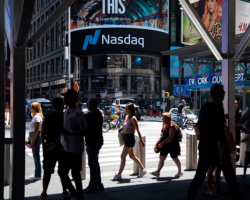Is There Any Logic Behind Optimism in the US Stock Market? | Daily Market Analysis
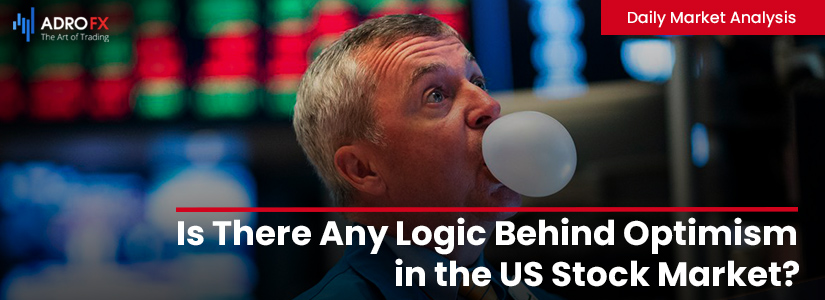
Key events:
- New Zealand – RBNZ Interest Rate Decision
- New Zealand – RBNZ Rate Statement
- New Zealand – RBNZ Press Conference
- USA – FOMC Meeting Minutes
First of all, there are enough reasons for optimism in the market, and each of them is quite convincing. China is lifting the quarantine measures imposed because of the coronavirus. This leads to improvements in supply chains and reduces pro-inflation risks.
Energy prices have been adjusting since their peaks in 2022, and a major gas crisis in the EU has been avoided partially thanks to favorable weather.
Also, many market participants believe that the peak of the discount rate is already very close and that there will be a pause followed by a rate cut.
In recent days, the S&P 500 index growth has corrected somewhat. The current values are now nearly 20% above last fall's lows.
But does this mean that the lows have already been reached by the market last year, and we are looking forward to continued growth this year?
To answer this question, it's worth recalling what has been the main "fuel" for market growth in recent years. The flow of liquidity generated by the Fed has been seeping not only into the accounts of big banks but also into the wallets of average consumers. Confidence in the strength of the economy and low rates allowed more spending (on credit, too), increasing household debt.
Now that the cost of servicing debt is rising, many will have to reconsider their usual spending habits. So far, the effect of the rate hike has not yet had a full effect on the economy and household spending. But the trend is clear - the rate will continue to rise and with it the cost of servicing credit.
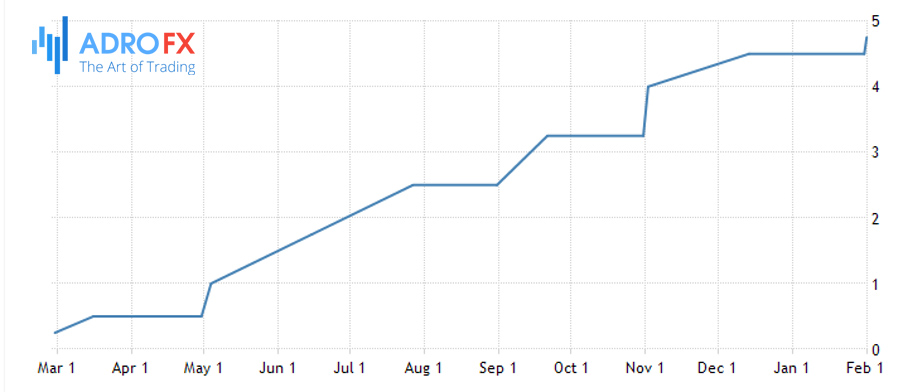
In fact, we are in a situation where the peak of the discount rate has yet to be reached, and we can only speculate about the approximate levels at which the rate hike will stop. Most market participants now expect the peak rate to be no higher than 5.25-5.5%. But even such levels, if sustained over the long term, are capable of affecting household spending in the medium term. And that will inevitably affect the profits of many companies in the major stock indices.
Yes, almost all of the big heavyweight companies have international businesses. But the problem is that the trend toward higher interest rates is not just in the U.S. right now. The ECB, albeit long overdue, as well as a number of other global central banks are also having to take measures to fight inflation and raise rates. Therefore, we cannot say that the problem with the cost of servicing the accumulated debt will only be in the U.S.
Can we say that the market will collapse again after a while?
Not necessarily. A broad sideways movement without a catastrophic collapse is quite likely. But the market needs the inflow of fresh money on a constant basis for sustainable growth, and this is not observed yet.
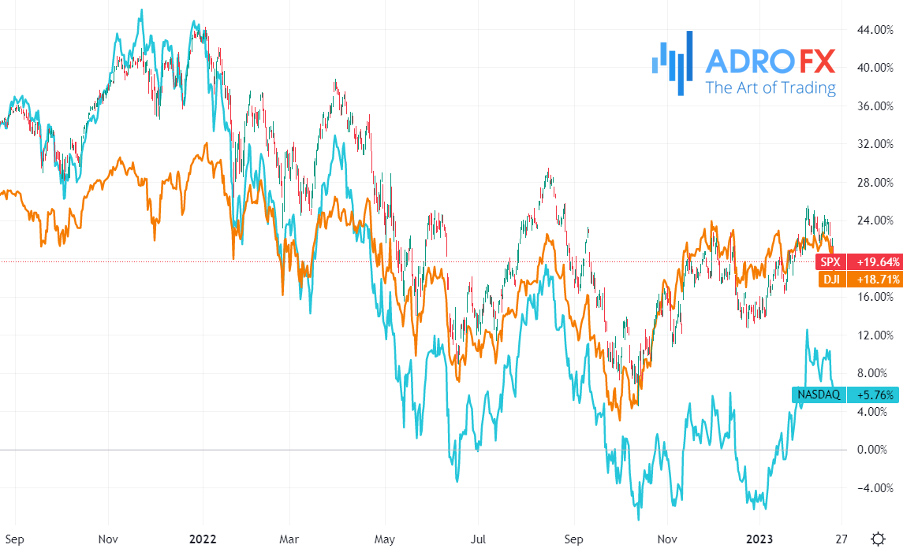
At the same time, U.S. stock indices ended Tuesday's trading down the steepest since mid-December on weak quarterly earnings reports from major retailers: Dow Jones Industrial Average fell 2.06% to 33129.59 points, Standard & Poor's 500 fell 2 percent to 3997.34 points, Nasdaq Composite index fell 2.5% to 11492.3 points.
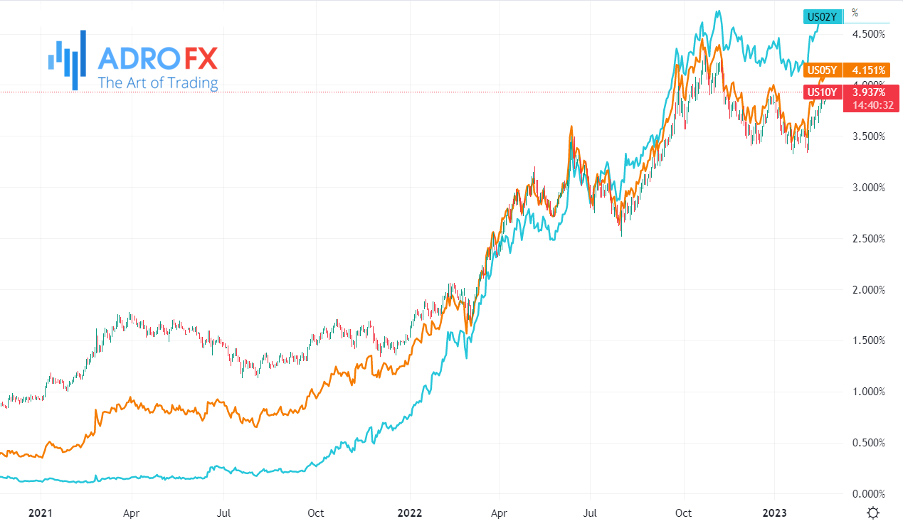
Yesterday investor sentiment was negatively affected by a rise in government bond yields to near annual highs amid expectations that strong economic data will encourage the Federal Reserve to maintain higher interest rates for a longer period of time.
